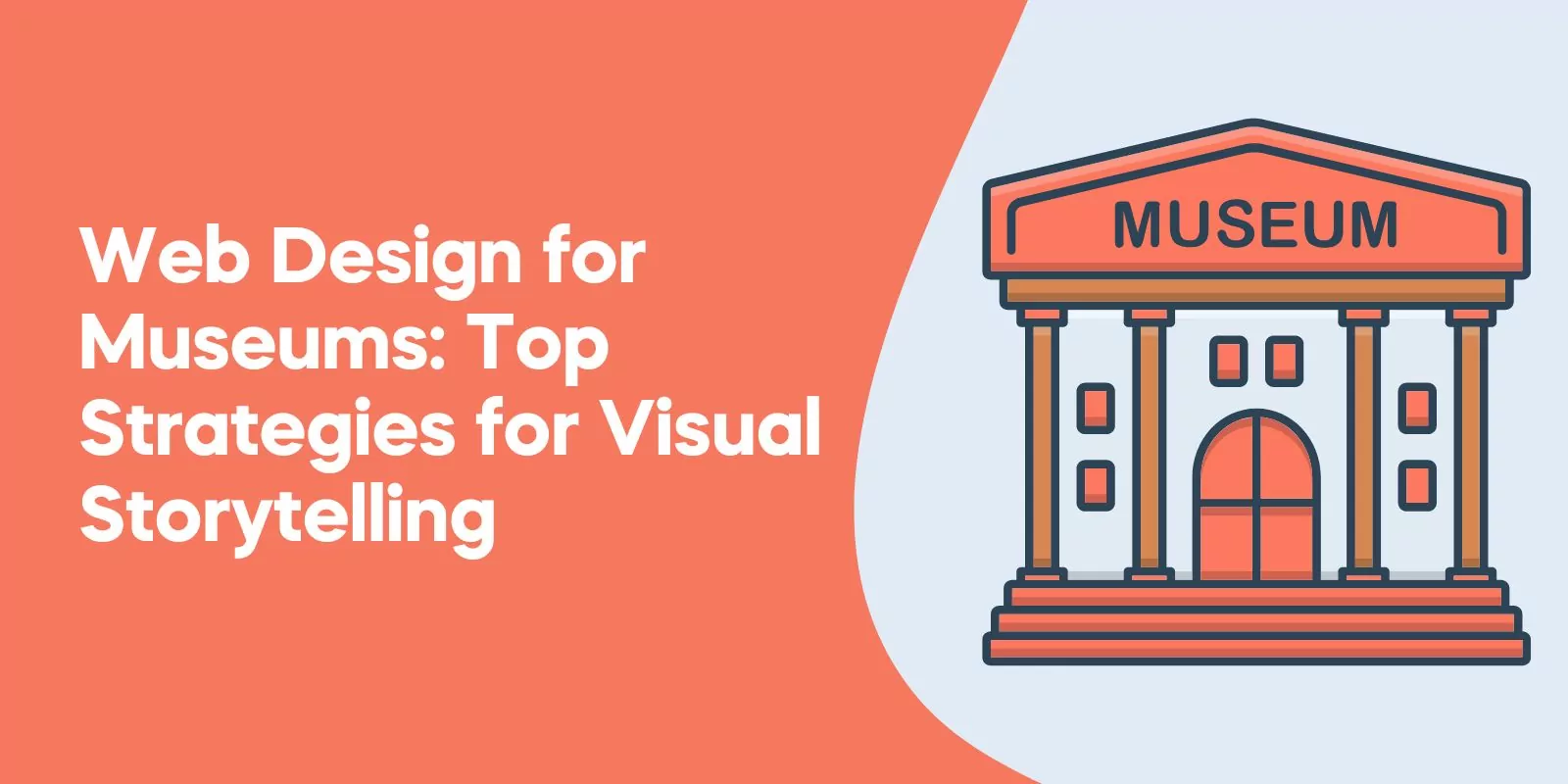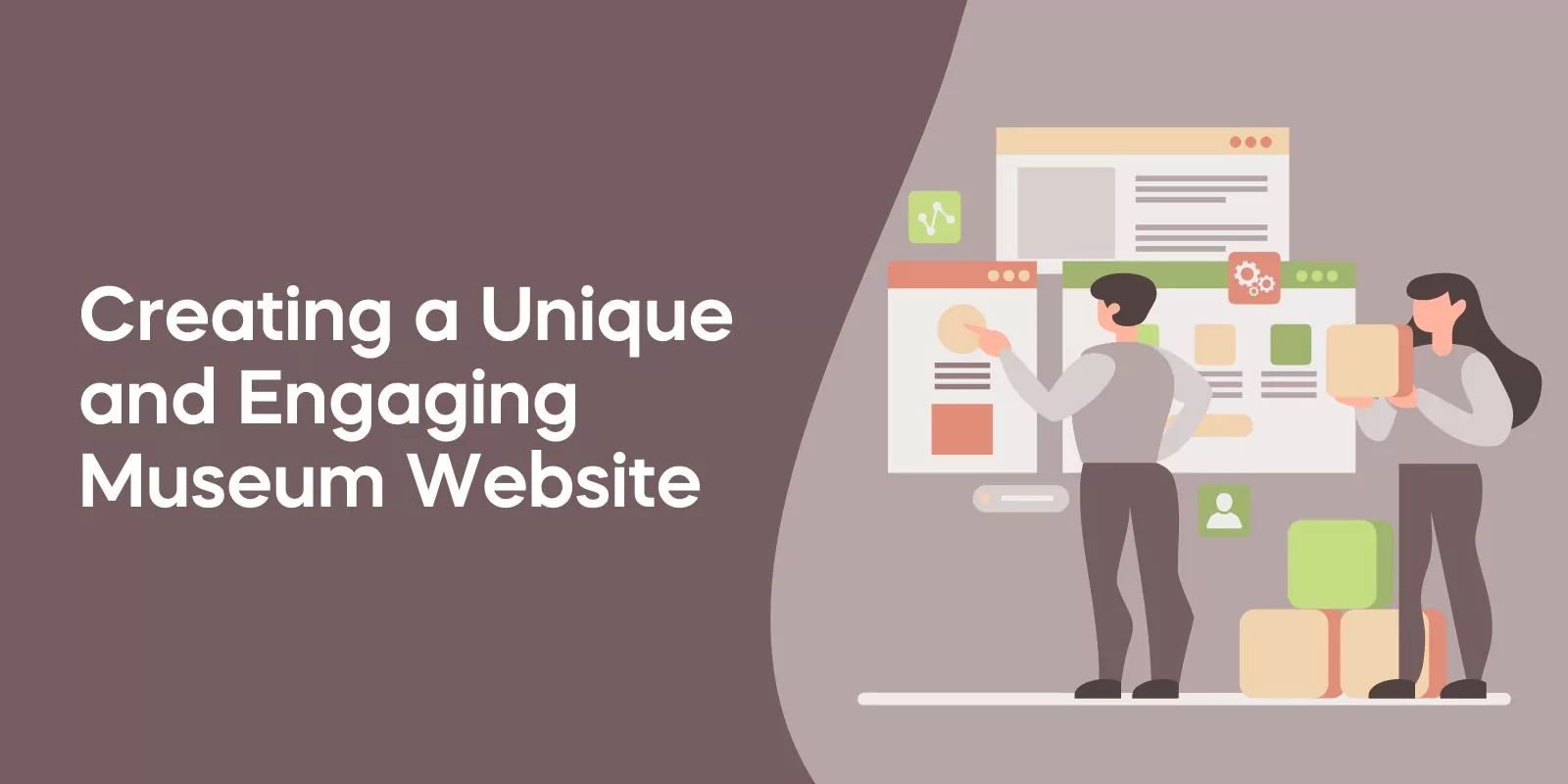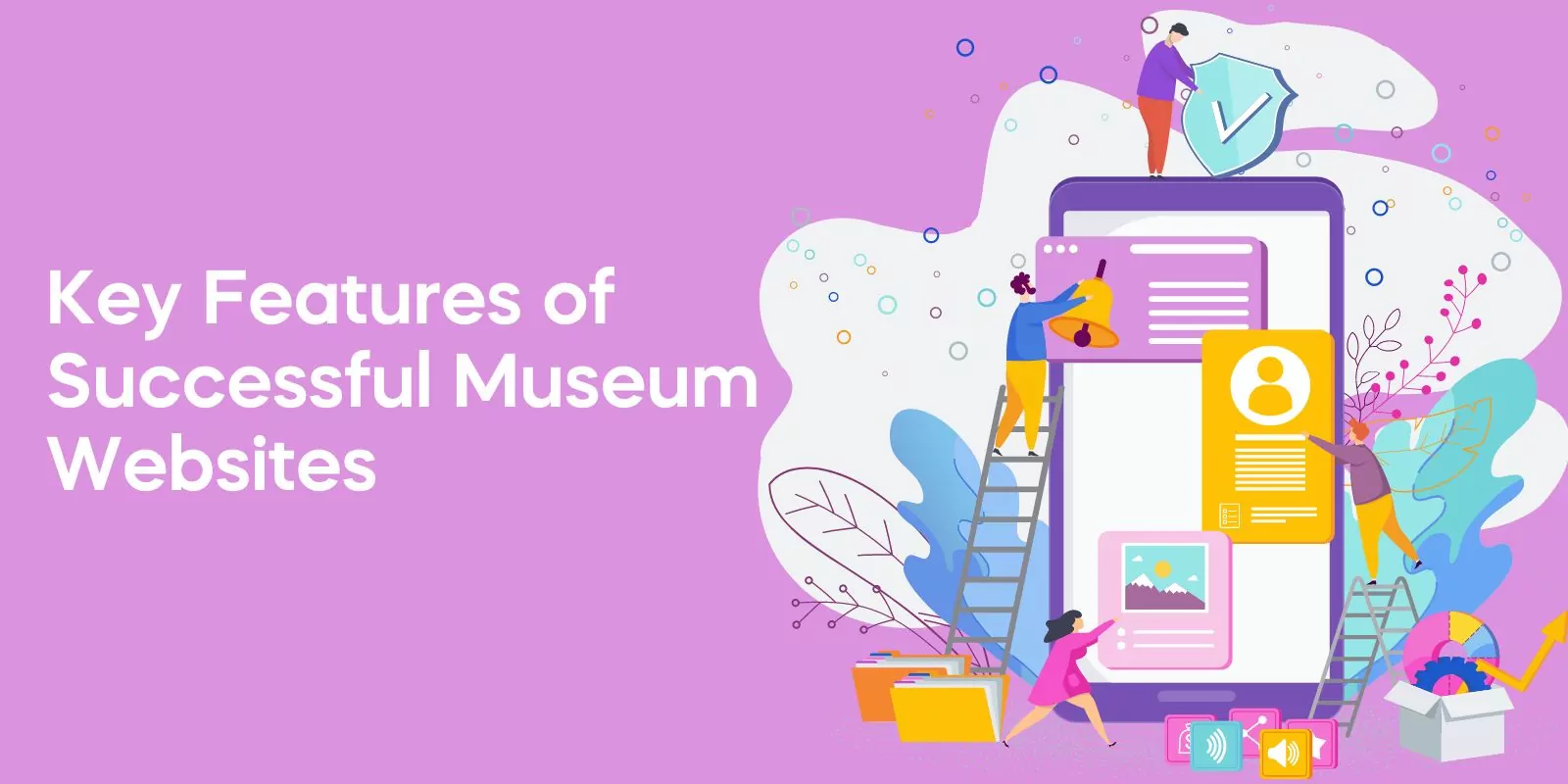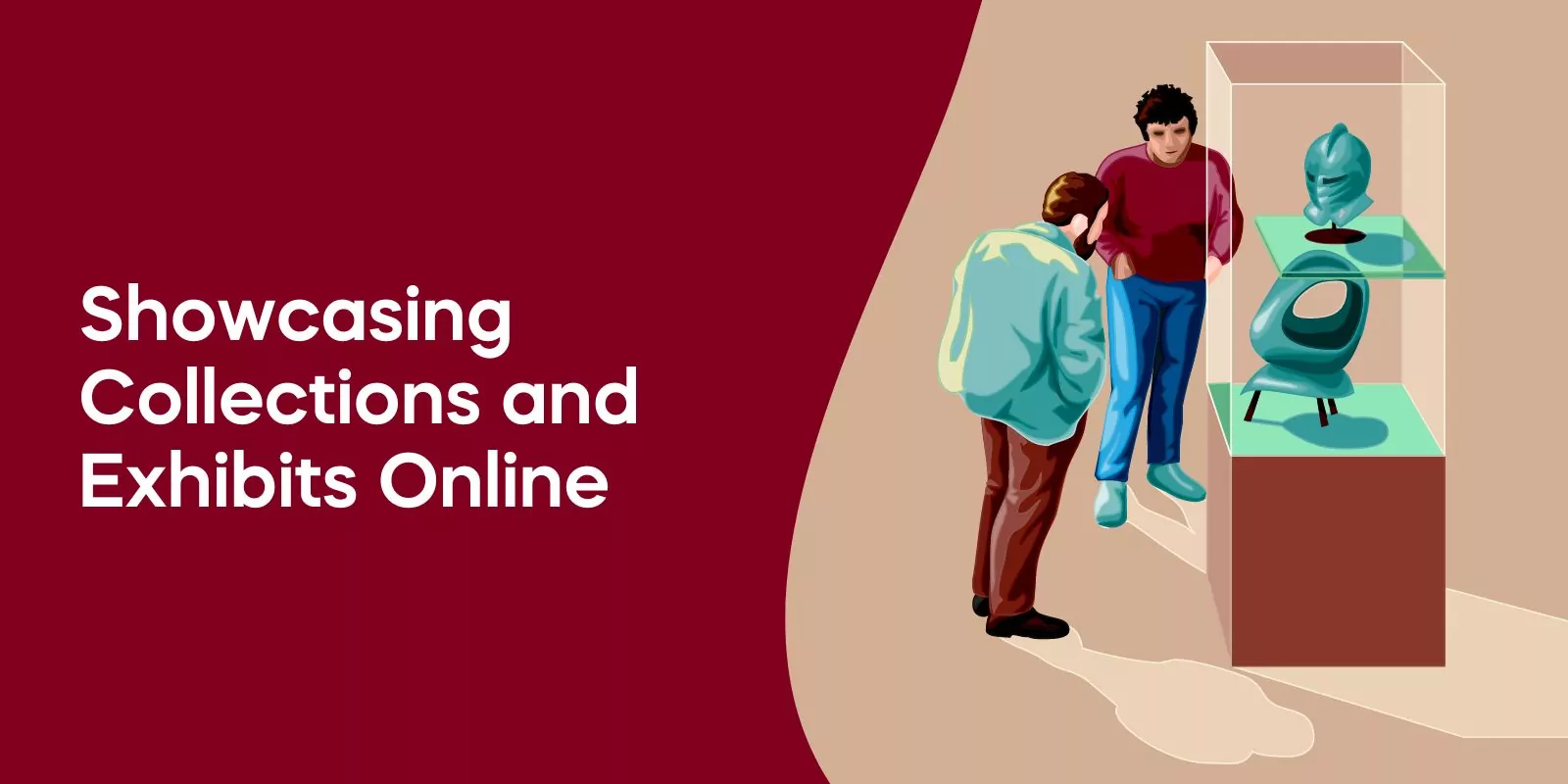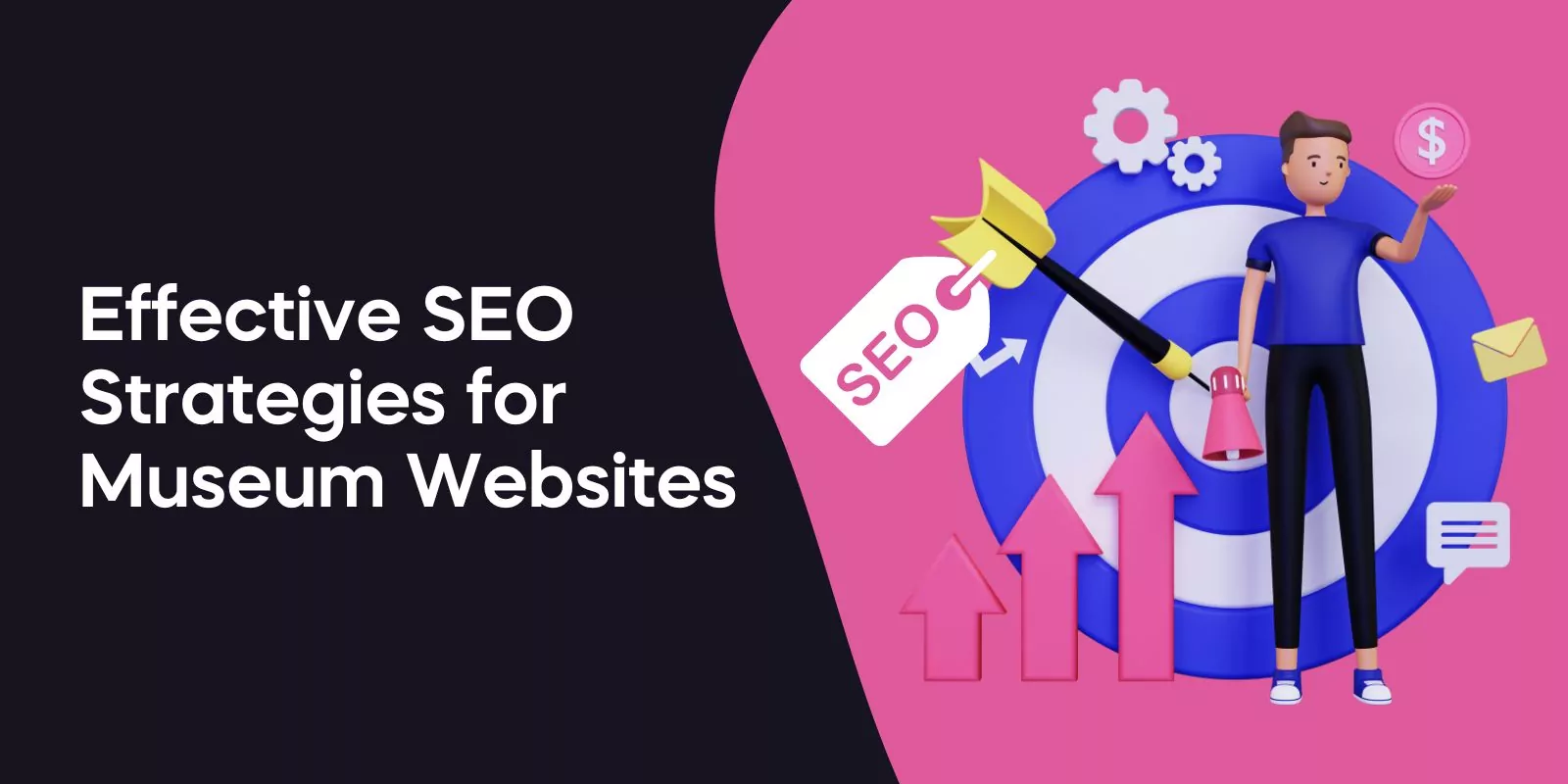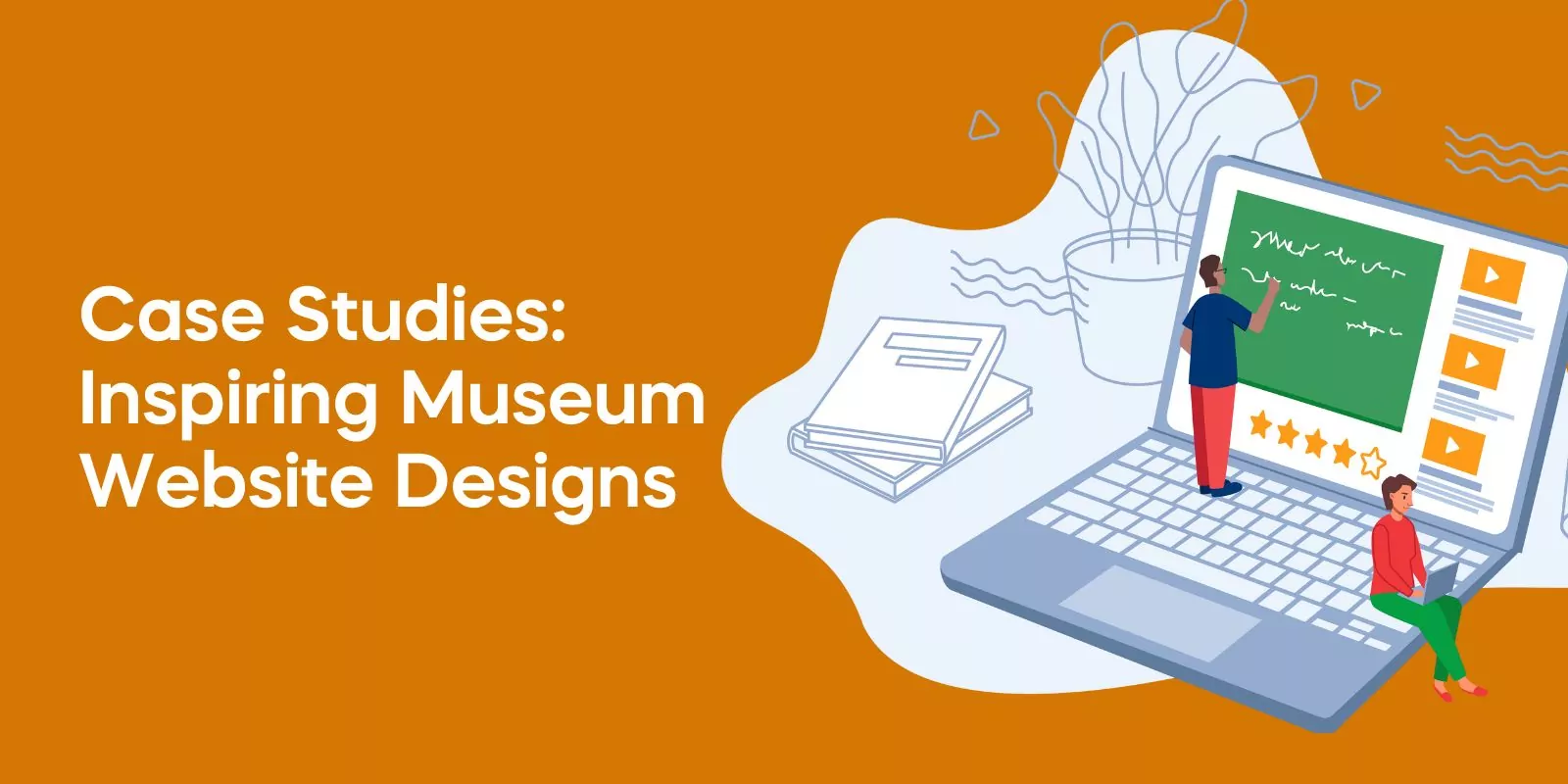So, how can museums optimally showcase their treasures and engage visitors through their websites?
This blog post delves into the best practices and innovative approaches in museum website design, exploring the crucial elements and features that contribute to a unique, engaging, and accessible online experience.
Creating a Unique and Engaging Museum Website
Designing a distinctive museum website is essential as it represents an institution’s character and highlights its displays and events.
A staggering 94% of initial impressions regarding a museum are associated with web design. Employing contemporary design principles and focusing on user experience ensures that a website not only entices visitors but also encourages them to explore the museum’s offerings further.
In the quest to create a unique and engaging website, several aspects come into play. These include branding, visual storytelling, and accessibility.
Each of these components plays a crucial role in forging a strong online presence that mirrors the museum’s identity and captivates its audience.
Importance of Branding
Branding is the cornerstone of a museum website’s design, allowing it to stand out from the competition and create a recognizable online presence.
An effective branding strategy involves employing color schemes, typography, and logo integration that harmonize with the museum’s identity.
A carefully chosen color scheme can facilitate brand recognition, enhance brand awareness, and create a sense of cohesion and uniformity throughout the website.
Typography, on the other hand, establishes an exclusive visual style and effectively conveys the museum’s message.
Integrating the museum’s logo into the custom design bolsters brand recognition and memorability while fostering a sense of unity and coherence across the website.
By focusing on these branding elements, museums can create a strong and memorable online presence that resonates with their target audience, even reviving some forgotten trends.
Visual Storytelling
Visual storytelling is vital for connecting with visitors, animating collections, and crafting a narrative that makes the museum experience more memorable.
Photos and videos are the two primary visual elements that should be utilized on a museum website to generate interest and support the information architecture.
To maintain authenticity, it is recommended to avoid using stock photos, as original photos can greatly enhance the user experience.
Incorporating interactive elements, such as virtual tours, 3D models, and multimedia presentations, further enriches the user experience by offering immersive and engaging ways to explore the museum’s exhibits.
By utilizing visual storytelling effectively, museums can create a captivating online experience that not only enthralls visitors but also deepens their understanding of the exhibits and events.
Accessibility and Inclusivity
Accessibility and inclusivity are paramount in museum website design to ensure that everyone, including those with disabilities, can participate in the museum experience.
By making the website accessible to a diverse audience, museums can attract new visitors, enhance the overall visitor experience, and reduce isolation by becoming more socially engaged.
For instance, the Van Gogh Museum’s website offers information in multiple languages, promoting knowledge of the museum to a global audience regardless of nationality, race, or language.
By prioritizing accessibility and inclusivity, museums can create an online presence that caters to the needs of all visitors and fosters a welcoming and supportive environment.
Key Features of Successful Museum Websites
An effective museum website not only captivates visitors with its design, but also offers seamless functionality and user experience.
Ensuring that the website is easy to navigate, responsive, and equipped with event promotion and ticketing systems will significantly contribute to its success.
Streamlining navigation on a museum website is crucial, as it allows visitors to quickly locate the information they require.
By incorporating responsive design, the website can provide an optimal viewing experience on any device, thus catering to a wider audience.
Integrating event promotion and ticketing systems can also boost awareness, visits, and revenue for the museum.
Easy Navigation
Providing an enjoyable user experience hinges on the ease of navigation. Concise navigation names, organized menus, and clear search functions ensure that visitors can effortlessly traverse the website and locate the information they need.
For example, the Frans Hals Museum website features a sticky navigation on the left sidebar that allows visitors to browse the website with ease.
Museum websites should also offer information about the physical location, such as maps, directions, and public transportation options.
By focusing on facilitating easy navigation, museums can ensure a positive user experience, encourage repeat visits, and strengthen brand awareness.
Responsive Design
A responsive design ensures that a museum website is optimized for any device, providing users with a positive and seamless experience.
Without responsive design, a website may not display optimally on every device, leading to a substandard user experience. This can result in a loss of potential visitors and a negative impact on the museum’s online presence.
Incorporating responsive design into museum websites guarantees that the website will be optimally displayed on all devices, from desktop computers to smartphones and tablets.
By making the website accessible to a wider audience, museums can attract more visitors and ensure a smooth and enjoyable browsing experience for all.
Event Promotion and Ticketing
Event promotion and ticketing systems are essential for museum websites as they facilitate the growth of awareness, visits, and ultimately revenue.
By integrating these systems into the website, museums can remotely manage promotions, discounts, and packages, offering a convenient and streamlined experience for visitors.
For example, the National Gallery’s website provides information on upcoming events via a slider, allowing users to easily browse and gain an overview of what’s happening at the museum.
Providing easy access to ticket purchasing, membership options, and store merchandise encourages visitors to explore the museum’s offerings further and contributes to increased revenue and visitor numbers.
Showcasing Collections and Exhibits Online
Effectively showcasing collections and exhibits online is crucial for museums to engage visitors and promote their offerings. Presenting collections and exhibits online can broaden accessibility, offer a more engaging experience, and facilitate simpler sharing and promotion on social media.
To successfully showcase collections and exhibits online, museums must utilize high-quality images and multimedia, as well as provide virtual tours and interactive experiences that captivate visitors and deepen their understanding of the museum’s displays and purpose.
High-Quality Images and Multimedia
The use of high-quality images and multimedia can significantly improve the user experience, offering additional interpretive material and contextual information concerning collections.
Utilizing a range of images and multimedia, such as photographs, videos, audio recordings, 3D models, and interactive elements, can enhance the online presentation of collections and exhibits.
It is important to optimize images for web performance, provide descriptive captions and alt text, ensure accessible versions of multimedia are available, and verify that multimedia is pertinent to the content.
By incorporating high-quality images and multimedia, museums can create an engaging and visually appealing online experience for visitors.
Virtual Tours and Interactive Experiences
Virtual tours and interactive experiences can significantly enhance the online presence of museums by offering immersive and engaging ways to explore exhibits.
These experiences can drive website traffic, draw more visitors to the physical museum, and provide a captivating experience for visitors.
Examples of successful implementations include 360-degree virtual tours, interactive 3D models, and audio recordings that provide an enhanced experience for visitors.
By offering virtual tours and interactive experiences, museums can engage with their audience and present exhibits in an interactive and innovative manner.
Effective SEO Strategies for Museum Websites
Implementing effective SEO strategies is crucial for enhancing the visibility and reach of museum websites. By optimizing website content with relevant keywords related to the museum’s collections and exhibitions, museums can improve their search engine rankings and target the appropriate audience. Some effective SEO strategies include keyword research and optimization, content creation and curation, and social media integration.
By focusing on these strategies, museums can ensure that their websites are easily discoverable by search engines, ultimately attracting more visitors and increasing their online presence.

Award-Winning
Sales Funnel & Website Expert
Ready for Revenue – Not Just “Traffic”?
- Websites that Work: Clean, fast, built to convert – no design fluff.
- Funnels that Sell for You: Step-by-step paths that turn clicks into paying customers.
- SEO That Hunts Buyers: Show up exactly when prospects reach for their wallets.
Keyword Research and Optimization
Keyword research and optimization involve identifying relevant terms associated with the museum and its offerings and optimizing content to target those terms.
This includes examining the competition, analyzing search engine results, and utilizing tools to identify pertinent terms.
By optimizing website content with relevant keywords, museums can improve their search engine rankings, target their desired audience, and gain valuable insight into the queries that their target audience is actually searching for.
This can inform content strategy and broader marketing efforts, ultimately drawing in qualified traffic interested in the museum’s offerings.
Content Creation and Curation
Content creation and curation play a vital role in boosting SEO for museum websites.
By providing new content for search engines to index, augmenting the number of keywords linked to the website, and elevating the website’s overall visibility, content creation and curation can help cultivate relationships with other websites, resulting in increased traffic and higher rankings.
Types of content that can be created and curated include blog posts, articles, exhibit descriptions, videos, podcasts, and other forms of multimedia content.
Successful examples of content creation and curation include the British Museum’s blog, which offers articles about their collections and exhibitions, and the Smithsonian’s online exhibit, which provides interactive multimedia content.
Social Media Integration
Integrating social media platforms into museum websites can boost online visibility and interaction, as well as offer a platform for museums to distribute their content and broaden their reach.
By incorporating social media platforms, museums can form connections with their visitors and create a more dynamic and engaging experience.
Recommended approaches for integrating social media platforms include creating a dedicated page for each platform, utilizing social media widgets to link to the platforms, and generating content specifically for each platform.
Examples of successful social media integration include the British Museum utilizing Instagram to share images of their collections, the National Gallery of Art using Twitter to promote their exhibitions, and the Museum of Modern Art employing YouTube to create virtual tours of their galleries.
Case Studies: Inspiring Museum Website Designs
In this section, we present a selection of inspiring museum website designs that demonstrate best practices and innovative approaches in the field.
These examples showcase innovative user interfaces, immersive storytelling techniques, and creative uses of technology to engage visitors and promote the museum’s offerings.
By learning from these successful museum website designs, you can gain insights and inspiration for your own museum website, ensuring that it stands out from the competition and captivates your target audience, while also helping you discover forgotten trends.
Innovative User Interface
The Frans Hals Museum website is not only an excellent example of an innovative user interface that offers a unique browsing experience, but also a great tool for visitors to explore the museum’s offerings.
Its vibrant, modern, and creative design features GSAP animation, bold typography, an attractive logo, a creative drop-down menu, and animated featured events.
The sticky navigation on the left sidebar allows visitors to easily traverse the website and access the information they need.
This innovative user interface design optimizes user engagement and personalization, making it easier for visitors to access information and interact with exhibits.
By incorporating unique and eye catching user interface elements, museums can create a memorable online presence that resonates with their audience.
Immersive Storytelling
The National Gallery’s website is a prime example of immersive storytelling.
The website features a slider in the header that showcases various collections, allowing users to gain an overview of the museum’s offerings and delve deeper into specific exhibits.
The website also effectively utilizes images, videos, and interactive elements to engage visitors and promote the museum’s exhibits.
By utilizing immersive storytelling techniques, the National Gallery’s website captivates its audience and encourages them to explore the museum’s collections further.
This approach demonstrates the power of storytelling in engaging visitors and promoting a museum’s offerings.
Creative Use of Technology
The Museum of Modern Art (MoMA) in New York is a prime example of an art museum website that incorporates creative uses of technology.
MoMA’s website features virtual reality experiences, allowing visitors to explore exhibits in an immersive and engaging manner. This not only enhances the user experience, but also generates interest in the museum’s physical location.
By incorporating creative uses of technology like virtual reality or augmented reality experiences, museums can offer unique and engaging experiences that cannot be found in traditional exhibits.
This innovative approach demonstrates the potential of technology in enhancing the museum experience and attracting a wider audience.
Frequently Asked Questions
What should a museum website have?
A museum website should ideally provide a comprehensive and engaging virtual extension of the physical museum experience. Key elements should include:
Clear and Intuitive Navigation: Just like in physical spaces, visitors should be able to find their way around easily. Categories, labels, and site maps should be well-organized and simple to understand.
High-Quality Visual Content: High-resolution images and videos of collections and exhibitions are crucial to captivate visitors. Virtual tours can also enhance the online experience.
Detailed Information: Each displayed item should have comprehensive data attached, such as its history, origin, and relevance.
Interactive Elements: Interactive displays, quizzes, or games can significantly enhance user engagement.
Educational Resources: These can include learning materials, workshops, or events for both children and adults.
E-commerce Integration: For selling merchandise, tickets, or memberships.
Accessibility Features: The site should comply with web accessibility standards, enabling all users to enjoy the site’s content.
Contact and Location Information: Clear details on how to get to the museum, opening hours, and contact information.
How can I create a unique and engaging museum website?
Creating a unique and engaging museum website involves merging the latest web design principles with a keen understanding of your audience’s needs. Here are some steps to consider:
Understand Your Audience: Tailor your website to cater to the needs and preferences of your target audience.
Tell a Story: Use your collections to tell engaging stories. Engage the audience with historical narratives or artist backgrounds related to the exhibits.
Implement Immersive Experiences: Consider adding VR or AR elements, interactive timelines, or 3D object viewers for a more immersive online experience.
Use High-Quality Media: High-quality images, videos, and sound clips can significantly improve user engagement.
Mobile Optimization: Ensure your website is responsive and mobile-friendly, as a significant portion of users will access it via mobile devices.
Keep It Fresh: Regularly update the website with new content, exhibits, events, and educational resources to encourage return visits.
What are the 6 main functions of museums?
The six main functions of museums can be categorized as:
Collection: Museums acquire, record, and store objects and specimens of educational and cultural value.
Preservation: They protect and conserve these collections for future generations.
Research: Museums conduct research related to their collections, contributing to academic and scientific knowledge.
Exhibition: They display collections for the public, often in thematic or narrative formats, to educate and entertain.
Education: Museums provide educational programs, workshops, and resources to stimulate learning and curiosity.
Community Engagement: They create and foster community connections through events, exhibitions, and outreach programs.
What are good characteristics of a museum?
Good characteristics of a museum include:
Accessibility: It should be physically accessible to all, with provisions for differently-abled individuals. In the digital age, this also extends to web accessibility.
Educational: Museums should stimulate learning and curiosity, catering to various age groups and educational levels.
Engaging: The museum should offer interactive displays and experiences that engage visitors.
Relevant: Exhibits should be updated regularly to maintain relevance, and the museum should respond to societal changes and issues.
Community-focused: Museums should engage with their communities, hosting events, workshops, and outreach programs.
Preservation: Good museums preserve and protect their collections, ensuring they can be appreciated by future generations.
What is a museum website?
A museum website is a digital platform that serves as an online extension of a physical museum. It typically provides information about the museum’s exhibits, collections, events, opening hours, ticketing, and educational programs. Many museum websites also offer engaging digital content such as virtual tours, online exhibitions, interactive elements, educational resources, and e-commerce for merchandise or tickets.
Are museum websites reliable?
Museum websites are generally reliable sources of information. They are managed by professional museum staff and often involve input from subject matter experts, such as historians, archaeologists, scientists, and curators.
The information provided on these websites is usually based on scholarly research and is subject to rigorous standards of accuracy. However, as with any source, it’s important to cross-reference information when conducting academic research.
What are the 4 types of museums?
The four primary types of museums are:
Art Museums: These museums house and exhibit works of art from various periods and regions. This can include paintings, sculptures, photographs, textiles, and other artistic mediums.
History Museums: They focus on collecting, preserving, and displaying objects of historical significance. They can be dedicated to a specific time period, event, or theme.
Science Museums: These museums are dedicated to exploring scientific concepts and discoveries. They often feature interactive exhibits and educational programs to make science accessible and engaging.
Specialized Museums: These museums focus on a specific subject matter, such as natural history, aviation, military history, or textiles. Their collections and exhibits are centered around their particular focus.
Conclusion
In conclusion, a well-designed museum website is crucial for effectively showcasing collections, engaging visitors, and promoting the museum’s offerings.
By focusing on branding, visual storytelling, accessibility, user experience, SEO strategies, and incorporating innovative design elements, museums can create a captivating online presence that resonates with their target audience.
By learning from inspiring examples and implementing best practices, museums can ensure that their websites stand out from the competition and captivate visitors from around the globe.
